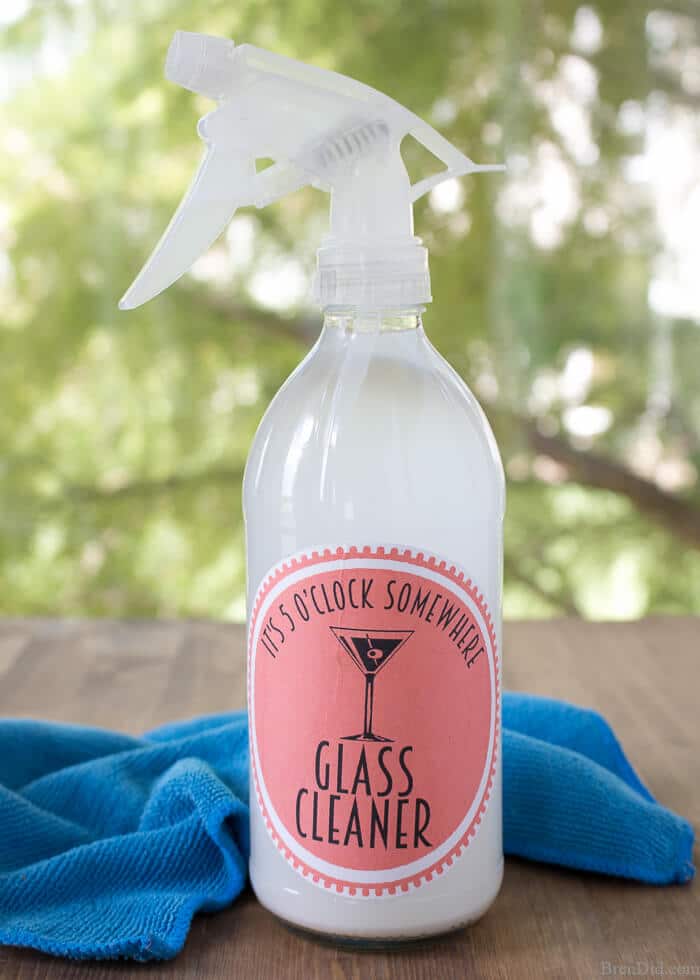
You can choose from any alternative glass cleaner recipes mentioned above and make some for your home.
HOMEMADE IGLASSES CLEANER HOW TO
Here are some tips on how to clean windows inside and out so that you can get the maximum amount of direct sunlight into your home and enjoy lush outdoor views. When used in a window cleaner recipe, it removes grime effectively and gives your windows a streak-free shine.Ĭleaning windows is not rocket science, but many of us get the simplest of chores wrong. How does cornstarch help in cleaning windows?Ĭornstarch contains fine granules, which make a natural abrasive. However, you should avoid using it on stained glass windows as it can scratch and damage them.

It can be added to glass cleaner recipes as it is non-toxic and does not create any harmful fumes. Is baking soda good for cleaning windows?īaking soda can be used to clean windows as it helps to remove and scruffs of stains from the windows. When you clean windows and mirrors with a solution that contains vinegar, you will get sparkling clean and streak-free windows. Vinegar is acidic, which helps to break down any grease that may have accumulated on the glass surface. White vinegar can work wonders for your windows and mirrors. Their degreasing and disinfecting properties make them a necessary part of these recipes. Essential oils like lemon, orange, and grapefruit also help to disinfect and deodorize the surfaces.

While these essential oils provide a fresh, clean scent, this is not the only reason they are used in the recipes. How do essential oils help in cleaning windows?Īll of our homemade glasses cleaner recipes have essential oils in them. However, I do earn a commission that helps in the cost of running this blog. Purchasing from the links here on my blog is no extra cost to you. *This post contains affiliate links to the essential oils and other products I talk about in the post.
HOMEMADE IGLASSES CLEANER PLUS
Plus commercial cleaners are expensive and creating your own DIY streak-free glass cleaner will save you so much money. Isopropyl alcohol is extremely flammable and can be toxic to humans in concentrated doses. It dissolves all oil or grease on contact. Isopropyl alcohol, also known as rubbing alcohol, is another critical ingredient in glass cleaners. Phthalates are believed to disrupt hormones and can be carcinogenic. Some cleaning products also contain fragrance containing synthetic chemicals like diethyl phthalate or diethylhexyl phthalate. If these fragrances are organic, they are not harmful. Many glass cleaning products manufacturers add fragrances to their products to mask the smell of butoxyethanol, ammonia, and chlorine. Since chlorine is heavier than air, using it in poorly ventilated areas can result in asphyxiation. Light exposure to chlorine can irritate the eyes and nose, while direct contact can cause severe chemical burns. ChlorineĬhlorine is used in glass cleaners as it kills microscopic biological impurities and leaves the surface clean. Though it does not take much to make a homemade window cleaner with ammonia, we recommend avoiding it as this ingredient has the potential for acute aquatic toxicity.

Ammonia triggers olfactory adaptation, which makes it harder to smell the more you are exposed to it. Exposure to this chemical can lead to burns and respiratory issues.

The ammonia found in Windex and other window cleaners is called ammonium hydroxide. This nitrogen-based compound is water-soluble and has a low evaporation rate. AmmoniaĪmmonia is another chemical commonly found in glass cleaners. Inhalation of this chemical can irritate the throat and lungs, and high exposure from this chemical can lead to liver and kidney damage.
HOMEMADE IGLASSES CLEANER SKIN
Several window cleaners contain 2-butoxyethanol, which can enter the body through skin contact and direct inhalation. Here are some of the chemicals that are present in store-bought glass cleaners – Butoxyethanol What’s wrong with your commercial glass cleaner?Ĭommercial cleaning products contain chemicals that can be harmful to your and the environment.


 0 kommentar(er)
0 kommentar(er)
